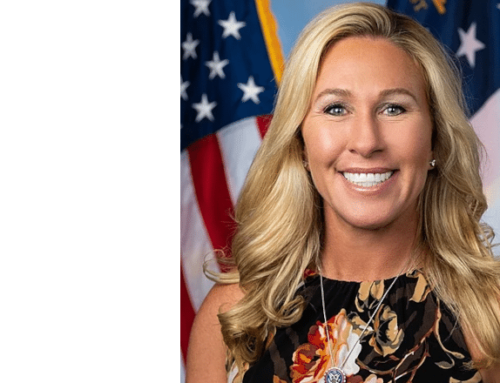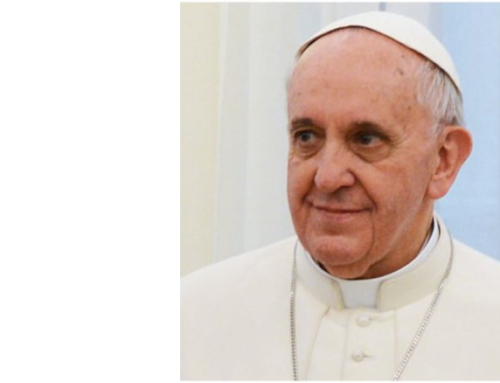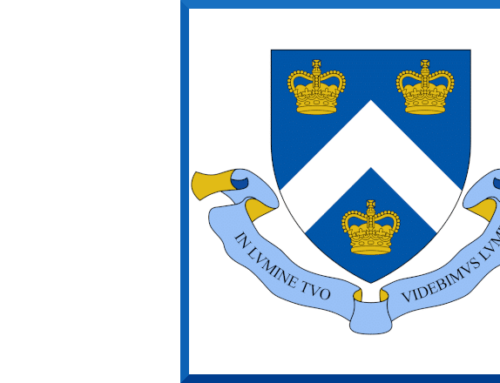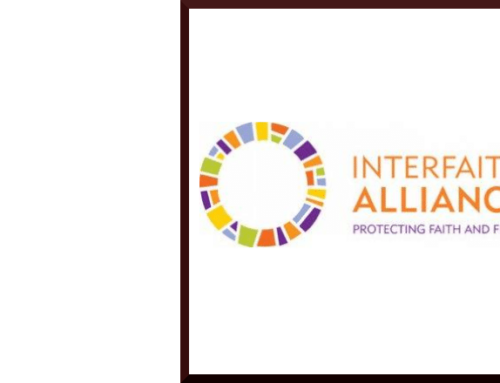The following article was written by Ronald J. Rychlak, Distinguished Professor at the University of Mississippi School of Law. He is one of the world’s foremost experts on the role of the Catholic Church during the Holocaust. He serves on the board of advisors of the Catholic League.
For decades now, critics of the Catholic Church have insisted that no assessment of Pope Pius XII and the Holocaust would be valid until all of the archives were examined. That argument has always struck me as weak. There is plenty of evidence to show that Pius defied the Nazis, aided the Jews, and encouraged the rescuers. Still, the critics insisted that no judgment could be final until all the documents were examined.
Earlier this year, the final archives were made available to researchers. Unfortunately, the coronavirus outbreak forced them to close soon thereafter (preventing my own scheduled research trip this summer). They re-opened and again re-closed. The result is that only a handful of relevant documents have been discovered. Yet, the critics who long insisted that all of the evidence had to be evaluated wasted no time in claiming that these new documents condemn the Church and the pope.
The first claim was made by Fr. Hubert Wolf of the University of Münster. He found an internal memorandum cautioning the pope not to accept all of the claims being made about the Holocaust and tried to twist it into proof of Pius XII’s anti-Semitism. It did not hold up to close scrutiny. (See The First Outrage from the New Archives, Catalyst, June 2020).
The newest outrage comes from long-time papal critic David Kertzer. Writing in The Atlantic, he claims that he and his researchers have found documents that show the postwar Vatican supported the “kidnapping” of two Jewish boys whose parents perished in the Holocaust, the so-called Finaly affair.
This matter started on February 14, 1944, when Gestapo agents entered the village of Tronche, France. They arrested two Jewish refugees from Austria, Fritz and Annie Finaly (also sometimes spelled Finely). The Finalys were transported to Auschwitz, never to be seen again. Their children (Robert, aged three and Gerald, aged two) were left behind. A Catholic woman named Antoinette Brun took the two boys into the Grenoble founding home, which she ran. She soon came to love the boys and was named provisional guardian. In 1945, after learning of their parents’ death, she began the process to formally adopt them.
After the war, an aunt from New Zealand wrote a letter asking that the boys be sent to her. Brun resisted, and soon the family sent a representative (the boys’ aunt, a sister-in-law to their father) to plead with Brun in person. She still resisted, and in 1948 she had the boys baptized into the Catholic Church. That had serious implications within the Church; it meant that they were now Catholic, and the Church could not turn her back on them.
Unlike the Nazis, for whom Jewishness was a racial matter, once someone is baptized into the Church, they are Catholic, plain and simple. This helped many victims thwart the Nazis and avoid deportation, either with actual conversion or with falsified papers, but it complicated things here. The parents were no longer in the picture, and many in the Church assisted Brun as she resisted efforts to relocate the boys.
In 1949, the Finaly family filed suit to have the children sent to an aunt in Israel. The lawsuit went on for almost four years, and the evidence was conflicting. The boys’ late father had told friends that he wanted to have his sons brought up in France, but there was debate about his (and their mother’s) religious wishes. For their part, the boys were said to have wanted to stay in France with Brun.
Kertzer cites as his new evidence, a “Vatican document coming from Church sources in Grenoble.” Discussing Brun’s stance, it says “Her attitude, motivated by her conscience from
the fact that the boys are Christian, is approved by His Excellency Cardinal Gerlier” (the archbishop who oversaw Grenoble). In addition to that memo about Gerlier, however, there is a January 1953 letter from him, that clearly indicates his strong discomfort with Brun’s position. (Kertzer attributes this to the fact that “the press had gotten hold of the story,” though it seems to have been in the news well before the date of the letter.)
Cardinal Gerlier’s letter asked for guidance on a particular matter. “In these conditions, should one be advised to refuse, come what may, to return the children, who belong to the Church by their baptism and whose faith, in all likelihood, would scarcely be able to resist the influence of the Jewish milieu were they to come back?”
After setting up his essay to discuss this difficult question, Kertzer lets it hang for a couple of pages while he goes over material that he covered in his earlier writings, including the false claim that Pius XII did nothing when Germans rounded up almost 2000 Roman Jews. (See New Books Attack Catholicism, Catalyst, October 23, 2001 and The Controversy Over Edgardo Mortara Catalyst, May 25, 2018). When he returns to the question at hand, it is not advice from the pope that we see as his new evidence, but a memorandum from the Holy Office that said the health of the soul was a matter of divine right of children who had reached the age of reason, and the Church had the duty to defend them.
Note that this had nothing to do with their Jewishness. If the children had been from an atheist family, a Hindu family, or a Muslim family, the answer from the Holy Office would have been the same. As Kertzer quotes from Future Cardinal and Vicar General of Rome, Angelo Dell’Acqua, “The Catholic Church not only has rights with respect to [the Finaly boys], but duties that it must fulfill.” There was clear debate within the Church as to the correct avenue.
French courts ultimately sided with the Finaly relatives, but when authorities went to get the boys, they were missing. Friends and supporters of Ms. Brun (who was arrested and held for six weeks), including some Catholic priests and nuns, had spirited them off to Spain.
Several arrests were made, and the Church got some bad press. Contrary to what the critics claimed, however, the Catholics involved were not acting on behalf of the institutional Church.
When she was asked by the press about her Catholicism, Brun said she “didn’t give a fig for the Pope.” Bishop Alexandre Calliot of Grenoble took to the radio airwaves to demand that anyone with information about the missing boys contact the authorities. One of the first to comply was a priest in Spain who reported on their whereabouts.
For his part, Pius XII approved an agreement that was negotiated between Cardinal Gerlier and the chief rabbi of Paris. It called for sending the children to their relatives in France, but provided for their free choice when it came to religion. Several of the pope’s top advisors advised him to reject any agreement that sent Catholic children to live in a Jewish household.
As the matter was unfolding, and the boys were still in hiding, the French ambassador presented the Vatican with a report that said, “The Governor of San Sebastián [in Spain’s Basque region] continues to think … that … ‘without a formal order from Rome, the boys will remain in the shadows.’” Soon thereafter, a representative of Cardinal Gerlier made the final trip into Spain to get the boys. They were waiting in the home of a Spanish provincial governor, and Church officials helped bring them back to France. As Time magazine explained (November 7, 1955): “the Roman Catholic hierarchy had helped in getting the Finaly brothers back” to their Jewish relatives.
After the family had taken custody, the boys were flown to Israel. Aware that this was an open breach of the agreement and meant they would be instructed in the Jewish faith. Giovanni Battista Montini, the future Pope Paul VI, noted that this affair, “had inflicted a serious blow to the Church’s … prestige in the world.” Some within the Vatican urged the pope to publish an article that would “unmask the Jews and accuse them of disloyalty.” Despite this advice, and despite having been presented with a draft article, Pius did not publish it.
While rushing to judgement on the basis of a couple of new archival documents, Kertzer completely overlooks the new evidence laid out in Mark Riebling’s book Church of Spies: The Pope’s Secret War Against Hitler (see When the Pope Tried to Kill Hitler, Catalyst, November 16, 2015) documenting Pius XII’s role in the plot to assassinate Hitler. Nor does he discuss the disinformation campaign against Pius conducted by the Soviets during the Cold War. He also fails to mention Pope Pius XII’s 1942 Christmas address or his open encouragement to Howard Wisla in 1941 that he must “Always be proud to be a Jew.” Ignoring elements like these render his conclusions simply invalid.
This whole event is reminiscent of another controversy that took place back in 2004, when The New York Times and other publications reported on the discovery of a document in a French archive, purportedly authorized by the Vatican, saying that Church authorities should not return “hidden” Jewish children (like the Finaly boys) to their families if they had been baptized. Long before any serious research could take place, critics were coming out from every rock to condemn kidnapping by Pius XII and the Catholic Church.
To those of us who had studied the work of Pius XII, the directive immediately seemed suspicious, and for good reason. The real directive, dated October 23, 1946, and authorized by Pope Pius XII, was quickly found in the Vatican archives. It was quite different from what had been reported in the news.
It seems that there were other Catholics who, like Ms. Brun, grew quite attached to Jewish children in their charge. The directive told the rescuers to return these children, baptized or not, to blood-related relatives who came to get them. Over and above that, if no relatives survived to reclaim the children, and if individuals or organizations unrelated to the children now wished to adopt them or transfer them to a new environment, each request was to be examined on a case-by-case basis, always with a sense of justice for the child, and with a sense of what their parents would have wanted for them. The children were not to be ‘dumped’ on the first agency that came along.
This directive is perfectly in line with Judeo-Christian compassion and responsibility. It is also very probative of Pius XII’s mindset on these issues. It is far more probative than the internal memoranda that Wolf and Kertzer have used to infer what Pius XII thought. Like any large entity, the Holy See has memoranda prepared on many issues. The advice found in one memo often conflicts with that of another. That is a good thing. What matters is the final decision. In the Finaly case, Pius—against the advice of some—returned children to their families. That’s because he was a good man and a good leader.







